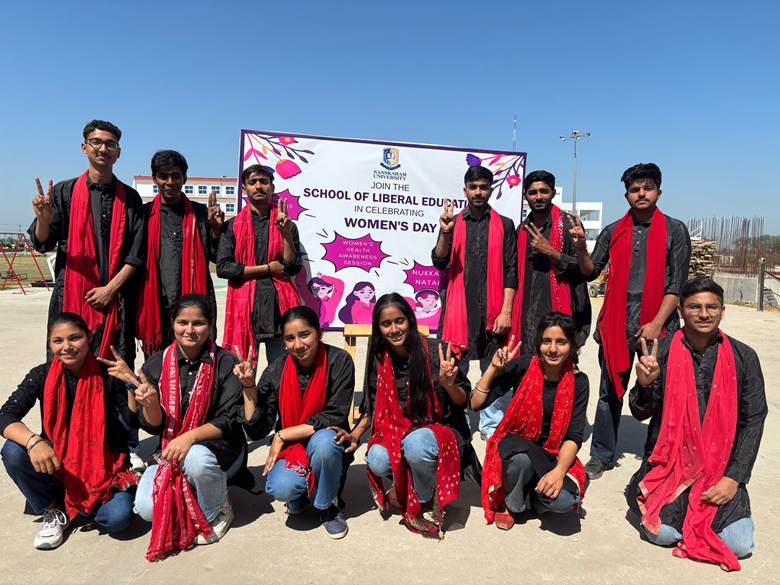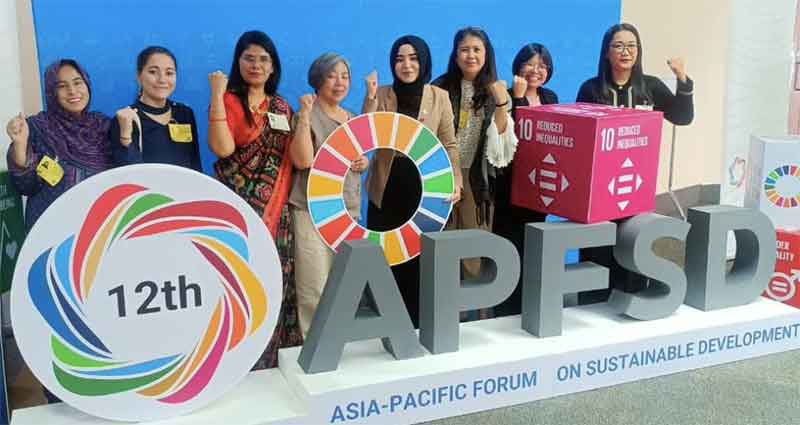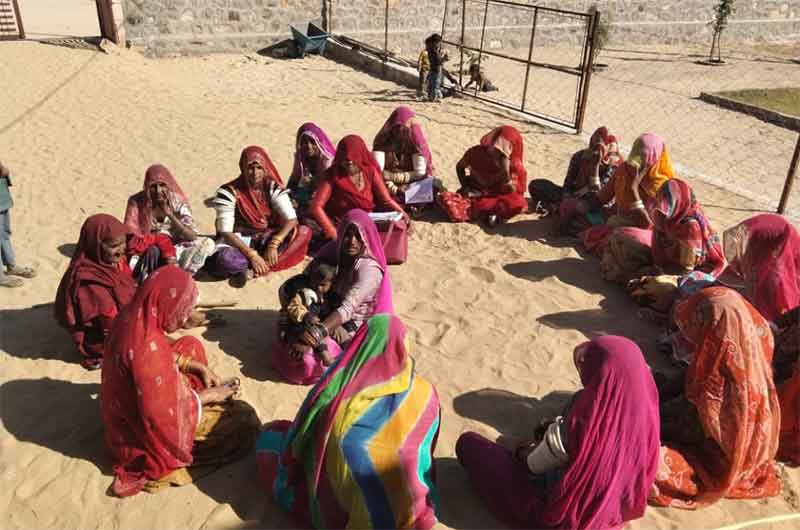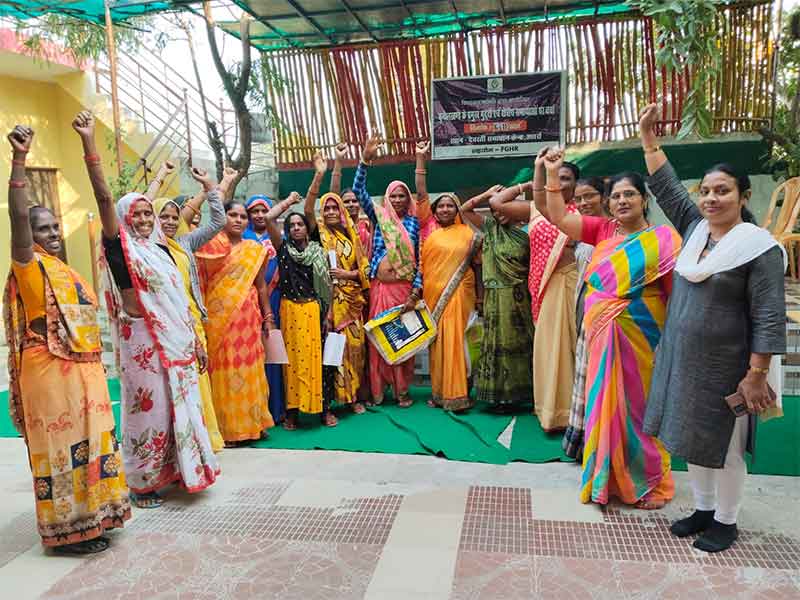
In an era dominated by structured schedules, digital screens, and urban expansion, we need to preserve the idea of street play—in public spaces more enthusiastically—as nowadays it has become a rare yet vital phenomenon. Its absence is not just reflecting a loss of childhood joy but a deprivation of profound psychological, emotional, and philosophical benefits that ripple across individuals and communities. Psychologically, street play acts as a dynamic laboratory for cognitive dialogue and social development, fostering creativity, problem-solving, and adaptability as students navigate unpredictable environments. They might look at a small puddle and pretend it’s a vast ocean or draw castles with chalk, turning the street into a magical kingdom while negotiating rules and roles and participating in the play. These plays sharpen executive function—the mental skills required for planning, focusing, and emotional regulation—while reducing sensory overload from screens, allowing young minds to decompress and engage at a deeper level, a state of immersive focus linked to reduced anxiety and enhanced mental well-being.
Socially, street play forces interaction across age groups and backgrounds, teaching them empathy, cooperation, and conflict resolution. It also has a potential in countering the modern epidemic of loneliness by fostering trust and collective identity through shared experiences. Emotionally, street play serves as a crucible for resilience, where participants and viewers process complex emotions like victory, defeat, and exclusion in real time. Such activity also builds emotional grit often eroded by overprotective parenting and risk-averse environments. Simultaneously, it also instills in us the sense of freedom to explore, fail, and recover agency and self-efficacy, countering helplessness bred by hyper-structured routines. The unmediated joy of street play—laughter echoing through alleys as students chase shadows or invent games—is not trivial but a primal expression of connection to the present moment, offering adults a bridge to nostalgia and spontaneity, softening the emotional rigidity of adulthood, and acting as communal therapy in alienated rural and urban landscapes.
Systemic inequities—gender-based violence, child exploitation, trafficking, and educational deprivation—have made the need for grassroots innovation more urgent than ever. It’s pathetic to say that even in the twenty-first century, women still have to navigate a labyrinth of threats—domestic violence, systemic misogyny, and societal erasure—while children are stripped of their fundamental rights to education, safety, and autonomy. Archaic cultural paradigms, institutional inertia, and a lack of awareness perpetuate these atrocities. Street play becomes a subversive instrument for dismantling these barriers with its unparalleled capacity to penetrate marginalized demographics—from urban slums to agrarian hinterlands. Unlike conventional media, it thrives on interactivity and cultural resonance, democratizing discourse and empowering even the illiterate.
It transmutes public spaces into arenas of enlightenment, deploying drama, music, and dialogue to deconstruct patriarchal tropes, engender empathy, and ensure the collective mobilization. In essence, Street play, or nukkad natak, is a powerful form of expression that combines art and activism and makes it easy to break down oppressive systems and start a change in society. It is a socio-political crucible where different forces or ideas come together, often leading to change or revealing true character. It is a medium that humanizes systemic atrocities, fosters solidarity, and demands society’s accountability. It is not merely art but a revolution staged on the streets, where every performance can be marked as a clarion call for a world where women and children are not survivors but sovereigns.
The power of street play also resides in its visceral immediacy. A meticulously orchestrated performance can evoke laughter, anguish, and introspection—forging a collective consciousness that galvanizes community solidarity. A play on domestic violence, for instance, humanizes abstract statistics, laying bare the psychological devastation inflicted on women and children while proposing pragmatic remedies like helplines or support networks. Similarly, a narrative on child labor discloses the theft of innocence and potential, compelling societal stakeholders to prioritize education over exploitation.
Producing street plays to safeguard women and children in India transcends theatrical performance; it not only educates but also ignites individual agency, transforming spectators into advocates. Staging such works on Women’s Day amplifies their potency, synchronizing them with a global homage to women’s resilience and a demand for equity. It focalizes international attention on gendered struggles, rendering it an optimal moment to spotlight India’s specific plights. By aligning with this movement, street plays transcend local activism, becoming a universal manifesto for justice.
**”Khamosh Cheekh”: “Silent Scream”

“Khamosh Cheekh,” a street play written and directed by me, stands as both an indictment and inspiration—a mirror to society’s failings and a beacon guiding it toward redemption. I staged it at our prestigious Sanskaram university on Women’s Day, transcending conventional theatrical boundaries to emerge as a significant socio-political manifesto. Its narrative architecture, steeped in dialectical tension between tradition and modernity, interrogates India’s gendered hierarchies meticulously. The play’s brilliance lies in its ability to weave visceral emotion with structural critique, exposing the paradoxes of a culture that ritualizes the divine feminine while perpetuating systemic violence against the girl child.
The Struggle to Find Seven Girls for Kanjak Puja, the opening scene, masterfully employs semiotic dissonance. The ritualistic veneration of young girls during Navratri—a celebration ostensibly honoring feminine divinity—is juxtaposed against the material reality of their erasure through female foeticide. This irony is not merely thematic but epistemological, revealing how cultural practices often serve as veils for patriarchal domination. The mother-in-law’s pragmatic dismissal, “One boy is enough for the puja,” crystallizes this contradiction, unmasking the commodification of women’s bodies as vessels that ensure patrilineal continuity. The play’s nonlinear progression—from claustrophobic domesticity to juridical confrontation—mirrors the fractured realities of gendered oppression, where private despair collides with public resistance.
At the hospital, when the mother-in-law wants to know about the gender, “The doctor’s rebuke, ‘Even asking a question about the gender of an unborn child is a criminal offense,” underscores the tension between legal modernity and entrenched misogyny. The ward boy’s clandestine revelation of the fetus’s gender—a transaction mediated by bribery—exposes the subterranean economies that sustain gender-based violence. Yet, the play resists fatalism: the daughter-in-law’s dream sequence, a lyrical soliloquy (*“Mother, I am a star nurtured in your womb”*), reclaims the maternal body as a site of resistance. Then the mother’s visceral plea, “I must save my child,” transcends personal anguish to become a collective cry against necropolitical erasure.
The play’s climax, Seeking Legal Help, marks a seismic shift from resignation to agency. The NGO worker’s invocation of historical icons—*“Think of Rani Lakshmibai, Savitribai Phule”*—anchors the struggle within a legacy of feminist resistance, transforming the personal into the political. Then the intervention of the lawyer’s incisive rhetoric, “Give daughters the same rights and love as sons,” dismantles the binary of “burden” and “heir,” reframing gender equity as a societal imperative. At the end, the father’s cathartic declaration, “Mujhe meri beti dil se manzoor hai… meri beti mujh par bojh nahi, mera garv ka karan hogi!” symbolizes the necessity of the collapse of intergenerational patriarchy, embodying conscientization—a waking to oppressive structures.Slogan like “Ladki nahi ab laachar, vo bhi hai sansaar, sanskaar aur garv ka adhaar!” “ Bachaayge beti, Padhayenge beti, badhayenge samaj! “function as disruptive interjections, jarring the audience into critical engagement. The dream sequence, with its surreal blend of poetry and protest, operates as a liminal space where the subconscious confronts societal taboos. This fragmentation mirrors the dissonance of lived female experience in a patriarchal society, refusing narrative closure to emphasize the ongoing nature of the struggle.
And then the final chant—”Naari shakti ko apnao, naye zamaane ko aage badhao!”transcends sloganism, becoming a collective oath to dismantle gendered violence. The play’s genius lies in its refusal to sanitize reality; it dwells in the grotesque to provoke catharsis through discomfort.
This play, Khamosh Cheekh, is not merely theater—it is a sociocultural exorcism. By laying bare the necropolitical logic that devalues female life, it compels audiences to confront their complicity in perpetuating these systems. Its power resides in its duality: a searing indictment of the present and an unyielding ode to the possibility of a future where the girl child is not merely saved but celebrated. In this interplay of critique and hope, the play becomes a beacon for feminist resistance, proving that art, at its most insurgent, can ignite revolutions.

Now you can enjoy the Hindi version of the whole script of this street play here:
**”Khamosh Cheekh”: “Silent Scream”`
Scene 1: The Struggle to Find Seven Girls for Kanjak Puja
(A man enters, exhausted.)
Brother-in-law: “Maa, Maa!”
Mother-in-law: “Kahan reh gaye tum log?”
Brother-in-law: “Bahut mushkil se mili ye 7 bachiyan. Tau ke Parle-Medaan tak jakar batoor ke laya hoon. Achha hua car le gaya tha saath.”
Mother-in-law: “Kyun bhai, aisa kaun sa akaal padh gaya hai bachiyon ka?”
Brother-in-law: “Nahi hai. Jyo thi vo badi ho gayi, apne sasural chali gayi… ab bachiyan nahi dikhti… haan, ladke mangte to ek hi gali mein 14-15 ladke ho jaate.”
Mother-in-law: “Ladka toh ek hi chahiye puja mein. Chal, jaldi aaja. Puja nipaṭ ke fir teri bhabhi ko hospital le jana hai checkup ke liye. Bahu, jaldi meri pyaari-pyaari kanyaon ke liye garam garam puriya tal de!”
(Sister mutters.)
Sister: “Uff, Didi! Tumhari saas kal tak tumhari jethani ko kitnaa-koss rahi thi aur tanna maar rahi thi do-beti paida karne ke liye. Aaj dekho, kya pyaar barsa rahi hai bachiyo per. Kitni double standards hain!”
(Performers chant.)
Slogans:
“Beti nahi hogi, toh kanjak kaun banegi?”
“Naa apni duniya swayam mitao!”
“Hosh mein aao, beti bachao!”
Scene 2: The Double Standards
(A woman folds her hands before a deity, praying.)
Mother-in-law: “Chalo, sab kaam thik se ho gaya. Hey Mata Rani, aapko kasam hai—is baar mujhe pote ka hi muh dikhana. Ye ek mannat puri kardo meri, toh agle saal ek nahi, do sone ke sikke chadhaungi!”
Husband: “Maa, chale hospital.”
Mother-in-law: “Haan, haan…”
Scene 3: The Doctor’s Visit
(Hospital scene. The daughter-in-law lies on a bed. The doctor enters.)
Doctor: “Maa ji, beti-bahu filhaal theek hai, magar inse zyada kaam mat karwaaiyega.”
Mother-in-law (hesitant): “Doctor madam, ek sawal poochh sakti hoon? Pehle hi garh mein do baar Lakshmi ka aagman ho chuka hai. Is baar hum ladke ki umeed mein hain…”
Doctor: “Maa ji, ye konse zamane ki baatein kar rahi hain? Yeh poochna bhi kanuni apradh hai!”
Mother-in-law: “Nahi, haan… vo toh main jaanti hoon… khair, achha, chalo koi nhi namaste.”
(They got a call from the ward boy of a hospital after returning home)
Ward Boy: “Maa ji, me hospital se bol raha hu mene aapki or Dr. Sahiba ki sari baate sun li thi,.. aapki madad to ho sakti hai… bas thodi si aap mere .. haathon ki khujli mita deti to … samajh rahi hain na?”
Mother-in-law: “Haan, haan… jaldi report whatsaap pe bejo !” Me apne chote bete se tumhe online pese bijwaa rahi hu.
Ward Boy: ji achaa
Mother-in-law (shocked): Are lo aa gyi report “Kya? Phir se beti?!”
(Performers shout.)
Slogans: “Beti nahi bojh hai, yeh soch galat hai!”
Mother-in-law: Beta Ajay sun… yahaa baith. Meri baat dhyan se sun. Jab tak meri baat khatam na ho, bolna nahi. Teri hi private job or ghar mein pehle hi do baar ladkiyan hui hain… aur betiyan akhir ko dusre ghar hi chali jaati hain. Uske liye bhi pehle inhe padhai-likhai karo, dehaj ikhataa karo … inki parvarish bhi aasaan nahi. Aaj kal ladkiyon ke saath itne ghinone kaam hote hain… Mera toh ji ghabrata hai… Aur tere papa-dadi bhi kitne pareshaan hain pote ka muh dekhne ke liye. Kab aayega hamare parivaar ka vaaris?”
Husband: “Tum kya chahti ho? Ling check karwa de? Pata nahi, kaanoon apradh hai… jail mein jayenge hum!”
Mother-in-law: “Aree….Vo kaam toh mene tera aasaan kar diya… ye le report. Ab tu bas abortion ki soch.”
Husband: “Par… ho toh… ye bhi nahi sakta… tumhe pata hi naaa , pregnancy pehle hi bahut late pata chali… vo samay nikal gaya… aur doctor khud bol rahi thi use aaraam karana hai…”
Mother-in-law: “Achha, toh kya karein?”
Husband: “Sochta hoon…”
Wife: “Kya hua?”
Husband: “Kuch nahi… vo hi… pote paane ka rang preshan hai… sab jald se jald pote ka muh dekhna chahte hain.”
Wife: “Aur tum?”
Husband: “Mujhe nahi pata… Main bas sabki khushi chahta hoon…”
Scene 4: Superstitions and Fake Babas
Mother-in-law: “Kya karoon… shayad Kaki ke paas koi samadhan ho. Hello, Kaki?”
Aunt: “Haan, kaise ho?”
Mother-in-law: “Bas, pareshaan hoon… is baar bhi beti hi hogi.”
Aunt: “Toh samasya kya hai? Tujhe baba ka pata or phone number de to Rakha hi? Tu bahu ko mere saath hi le chalna ….Unke prasad se toh kitnon ko beta ho chuka hai!”
Mother-in-law: “Par abhi abortion ke liye der ho chuki hai…”
Aunt: “Toh uski bhi kya chinta? Teri badi bahu ke time tujhe di thi na maine desi dawa? Tune meri baat nahi maani… ab aazma le uss desi dawa ka kamaal!”
Mother-in-law: “Haan… kash maine maan li hoti tumhari baat chalo me aaj bahu ko deti hu tumhari dawa!”
(Mother-in-law hands a glass of milk to daughter-in-law)
Mother-in-law: “Le beta, ye doodh pee le.”
Sister: “Nahi! Bilkul nahi! Maine inki aur Kaki ki saari baatein sun li hain. Ye tumhara bacha girana chahti hain!”
Mother-in-law: “Kaisi bekar ki behki behki baatein kar rahi hai ladki ? Tum dono muje joothe ilzaam me fasana chahti ho ! Pina hai toh piyo… nahi toh jaake so jao!”
(Daughter-in-law falls asleep and sees a dream)
“Maa, O Maa!
Main teri kokh mein pal raha sitara hoon Maa
Mere dil ki dhadkan tera hi geet gaati hai.
Maa, mujhe bhi tumhari komal mamta ka sparsh paana hai.
Apne sapne bunna hai, un par vijay prapt karni hai.
Maa, Maaa…..main vada karti hoon—
Main kabhi tum par bojh nahi banungi.
Hamesha tere aangan ki khilkhilahat bani rahungi.
Par phir bhi, agar me tumhein nahi chahiye hu,
Toh main khud hi Bhagwan ji se keh doongi:
Mujhe teri kokh se teri gaoudh me ek khamosh Cheekhh bana kar
Mara hua hi beeje… Mara hua hi beeje!”
Daughter-in-law (screaming):
“Nahi! Nahi! Nahi!”
(Turns to her sister)
Daughter-in-law:
“Mujhe kisi bhi haal mein apna bacha bachana hai.
Mujhe mera bacha chahiye!”
Sister:
“Fikaar mat karo. Main already madaad bula chuki hoon.”
Scene 5: The Turning Point – Seeking Legal Help
(Knocking on the door.)
“Ye kya bheed lagaa rakhi hai mere darwaze par? Kaun ho tum log?”
NGO Worker: Beti Bachao Beti Padhao sirf ek salogan hi nahi—ye ek movement hai! Jiske hum sab pakshdhar hain.
Father-in-law/Sarpanch: Achaaa, esa hi ….Main is ghar kaa mukhiya nahi, is pure gaon kaa sarpanch bhi hoon. Or saoo baato ki ek baat ghar ka vaaris to sher hote hi biliyaaan nhi !”
NGO Worker:”Bahut dukh hota hai ki aaj bhi aap jaise vikrit soch ke log maujood hain. Par shukr hai, in sbke bawajood bhi kayi mahilayein apna lohaa manvaa chuki hain —Rani Lakshmibai, Savitribai Phule, Kalpana Chawla, PT Usha, Aishwarya Rai…aur kitni hi angeenat ! Agar inke maa-baap ne bhi aap jaise soch rakhi hoti, toh kaise Bharat ki ye mahilayein vishvpatal per apna parcham lehraati or kese Bharat ka sinaa garav se chodaa krti !
Aapki bahu ke garbh mein pal rahi bachi bhi is desh ki hi beti hai!”
(Slogan echo.)
“Naari shakti ko apnao, naye zamaane ko aage badhao!”
“Beti hai anmol, beti hi anmol!”
Lawyer:
“Aisa hai! Aap jaise dhakiyanusi soch ke logo ko hi jadd se ukhaad phenkne ke liye sarkar aur kanoon, mahila sashaktikaran ke liye lagatar niyamo me sanshodhan krti rahi hi ! Ladki nhi ab laachar ladka ho ya ladki traazu ke iss tool mol se upar utho or apni ladkiyo ko bojh nhi misaal banao ! Varna, too salaakhon ke piche ki duniya ke darshan kar aao… police ke dande aur thane ki roti ke bhi apne hi swaad hi!” Atti hi hogi vo bhi !
(Police siren sounds.)
Slogan:
“Beti ko adhikar do, beton jaisa pyaar do!”….Adhikar do …pyar do !
Lawyer: “Doctor sahiba, apko kuch kehna hai?”
Doctor:”Pehli baat to ye : ek maa aur ek Janani hone ke naate, iske kaoukh par sirf aur sirf iska hi adhikaar hai. Dusri baat: aap sabko jagrukta ki zarurat hai—beta ya beti paida karna kudrat ka faisla hai. Maa ke pass esaa koi ishawariye Ashirwad, deviye shakti ya biological power he hai hi nhi ki beta peda ho,…. haan Purush ke paas jrur ye biological power hi ke beta peda ho ske …!”
Lawyer (mockingly):
“Ohho! Matlab aaj tak hum galat candidate ko utpidit karte aaye hi ? Batao bhai, ab kya purushon ka jeena dushwar kar de ki vo beta ku nhi de rahe hi samaj ko ?”
(Absolute silence.)
A villager (breaking down):
“Maine bhi bete ke lalach mein paanch paanch betiyan paida kar li. Betiyon ko nahi padhaya, bete ko padhaya… aur usne mujhe mere budhape mein chhod diya. Aaj Meri haari bimari me meri betiyan mere saath khadi hi… ek ne toh ilaaj ke daruan mujhe apni kidney tak de di. Main kitna abhaga hoon! Kaash maine apni betiyon ko padhaya hota… Sahi hai, hamari betiyan hi hamari taakat hain!”
(Performers chant.)
Slogan:
“Jo beti ko de pehchaan, mata-pita vahi mahan!”
Scene 6: The Realization
(The father steps forward, placing his hand on his wife’s shoulder.)
Father:
“Main Asha ke saath hoon. Mujhe samajhna chahiye thaa ki jab apne maa-baap ki dhakiyanusi soch se main itnaa pareshaan hoon, toh is par kya beet rahi hogi. Ye mere hi vishwaas per to aapna ghar muj sang basane ayi hi me hi to iska ghar-sansaar hu. Mujhe meri beti dil se manzoor hai… meri beti mujh par bojh nahi, mera garv ka karan hogi!”
(Performers chant.)
Slogan:
“Ladki nahi ab laachar, vo bhi hai sansaar, sanskaar aur garv ka adhaar!”
“ Bachaayge beti, Padhayenge beti, badhayenge samaj!!”
THANK YOU !
Subscribe to Our Newsletter
Get the latest CounterCurrents updates delivered straight to your inbox.
Author Biography:
Dr. Vaishali holds a Ph.D. in history from the University of Delhi and specializes in Partition of India and Dalit history. With a postgraduate degree from Jawaharlal Nehru University and teaching experience at the University of Delhi, she is an adept educator. She has contributed to museum projects on freedom fighters and nationalism and is passionate about research, writing, and editing. Her academic interests encompass the Partition of India, cinema, and education, edu-tech, while she actively engages as a faculty member for both undergraduate and postgraduate students. Right now, she is working at the Sanskaram University, jhajjar, Haryana,India”.















































